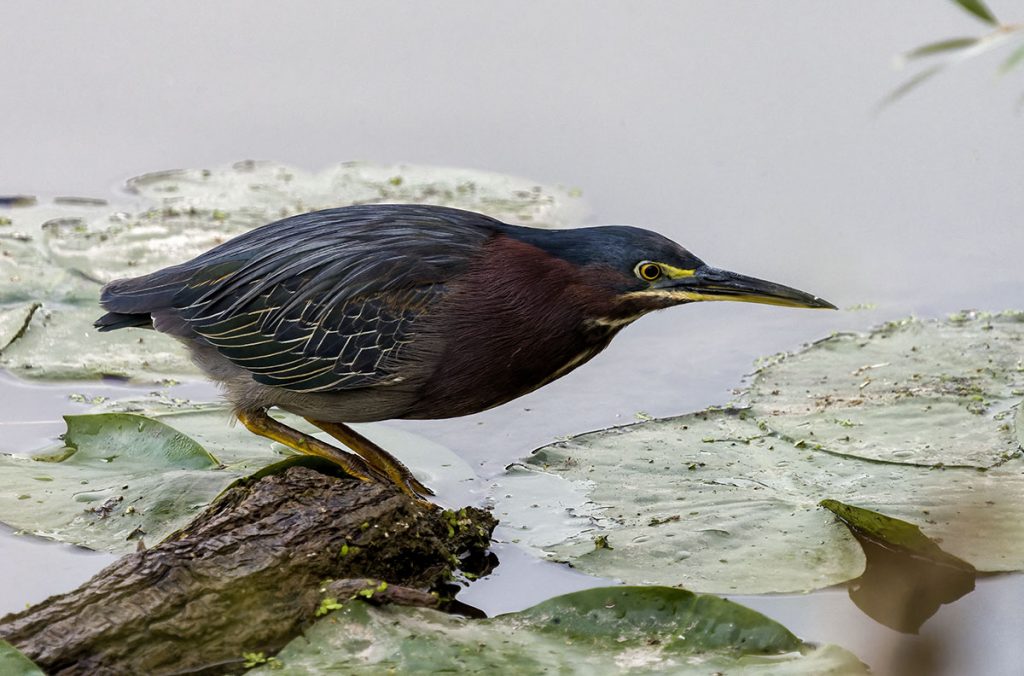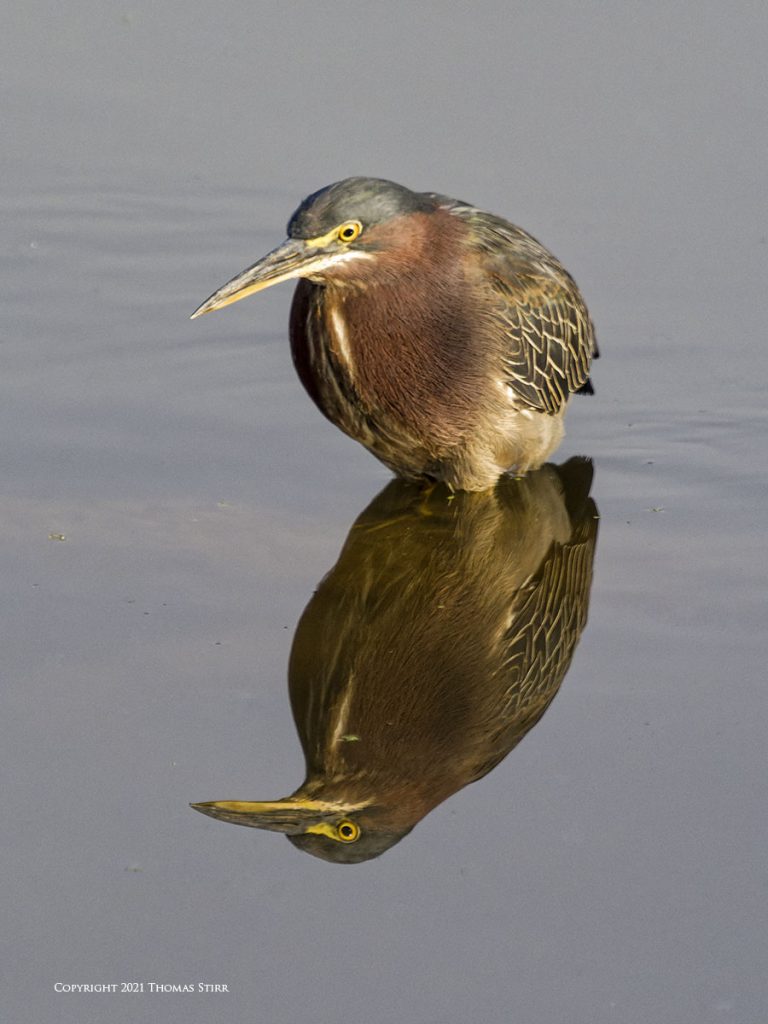This article shares an assortment of handheld photographs of a cooperative green heron, captured during a recent visit to Hendrie Valley.
NOTE: Click on images to enlarge.

I arrived at Hendrie Valley reasonably early in the morning, and decided to start my day without the use of an M.Zuiko teleconverter. I noticed a green heron in some shade and decided to investigate. Often this species of bird can be skittish. It was great to find a cooperative green heron to photograph. As you can see from the EXIF data I started out using a fairly slow shutter speed of 1/50th, with my lens fully extended to 400 mm (efov 800 mm).

My usual approach with perched birds is to get in as close as possible. I started off using this approach, but switched things up a bit as this cooperative green heron lingered along the shoreline. This gave me more time to experiment with composition.

I moved back from the cooperative green heron and composed a few images that included more of the environment to give the photographs more context. The following image is from the same RAW file as the photograph above. The only difference is with the crop orientation.

As is my standard practice, I used Bird Detection AI Subject Tracking for most of my photographs that morning. The only deviation is when I used Pro Capture H.

We typically think of Pro Capture H in terms of birds taking flight. I find that it is also very useful with perched birds, and those walking around in their environment.

Pro Capture allows me to capture precise leg, wing, body and head positions. Especially with birds like this cooperative green heron, as they often move very slowly and deliberately.

Another great use of Pro Capture H is to photograph specific behaviors such as a bird extending its neck and/or opening its beak. These small details can help make a bird photograph more interesting.

This cooperative green heron flitted off a few times, only to return a few minutes later. This created some opportunities for me to capture images of it at different spots along the shoreline of the pond. Here are a few more of those photographs.





Old habits die hard, and I couldn’t resist capturing a close-up photograph of the cooperative green heron’s head and neck, as you can see in the image above.

It was a ‘dead still’ morning with absolutely no breeze. For a time, the surface of the water was like glass. This gave me a unique opportunity to compose some images that incorporated reflections.

The last photograph in this article is one of my favourites from my photo session at Hendrie Valley that day.

When out photographing perched or static birds like this cooperative green heron, it can be beneficial to experiment with various shutter speeds, and special features that your camera may provide.
Technical Note
Photographs were captured handheld using camera gear as noted in the EXIF data. Images were produced from RAW files using my standard process. Crops are noted as appropriate. This is the 1,068th article published on this website since its original inception.
How you can help keep this site advertising free
My intent is to keep this photography blog advertising free. If you enjoyed this article and/or my website and would like to support my work, you can purchase an eBook, or make a modest $10 donation through PayPal. Both are most appreciated. You can use the Donate button below. Larger donations can be made to tom@tomstirr.com through PayPal.
Word of mouth is the best form of endorsement. If you like our website please let your friends and associates know about our work. Linking to this site or to specific articles is allowed with proper acknowledgement. Reproducing articles, or any of the images contained in them, on another website or in any social media posting is a Copyright infringement.
Article and images are Copyright 2021 Thomas Stirr. All rights reserved. No use, duplication or adaptation of any kind is allowed without written consent. If you see this article reproduced anywhere else it is an unauthorized and illegal use. Posting comments on offending websites and calling out individuals who steal intellectual property is always appreciated!


Great images, Tom!
I can wait for Covid restrictions to be lifted so I can come and get another lesson from you at Hendrie Valley. It is one of the best birding spots I have ever visited.
Jack
Hi Jack,
I’ve also enjoyed spending time with you at Hendrie Valley. This fall I will be investigating additional sites in the general area to potentially add for client coaching. Given the 4th COVID-19 wave and the highly infectious nature of the Delta variant I likely will not be doing any direct client work until sometime in 2022.
Tom
These are the best Green Heron images I have ever seen, Tom. Very nice indeed.
Thanks Bill… I’m glad you enjoyed the images!
Tom